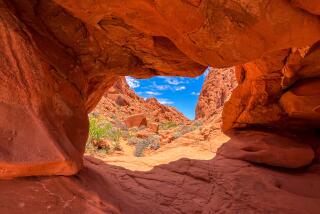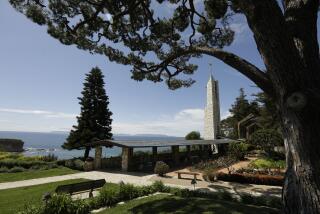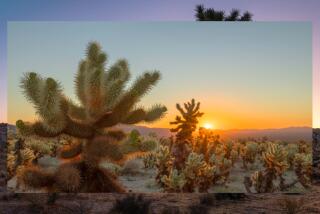Crater Offers Perpetual Sunset
The volcanic eruptions that drove the ancient Sinagua from their original homes and created the unusual farming conditions at Wupatki also created one of northern Arizona’s most spectacular volcanoes, a 1,000-foot cinder cone known as Sunset Crater.
Volcanic eruptions offer visions of rivers of lava or gigantic explosions such as the one that blew the top off Mt. St. Helens in 1980. The eruptions that built Sunset Crater, however, were different, spewing small globs of molten rock high into the air, where they solidified and fell back to earth as cinders. Many of the small ones drifted for miles, but the larger ones fell quickly, building a huge pile of cinders, creating sort of a volcanic sand dune.
Although the worst eruptions apparently occurred early in its history, the cone was not built all at once, but instead grew sporadically over the course of two centuries. By the time its name was bestowed upon it in 1885 by John Wesley Powell, it had been quiescent for more than 600 years.
The name comes from the fact that one of the crater’s last eruptions involved lava with an unusually high content of iron and sulfur. These elements produced a layer of material near the crater rim with beautiful red and yellow colors, making the mountain appear as though it were perpetually bathed in the rosy glow of sunset.
Today, Sunset Crater is preserved as the centerpiece of Sunset Crater National Monument, a five-square-mile wonderland of jagged lava, scattered islands of ponderosa pine and more cinders than most people are likely to find anywhere else in a lifetime.
The monument is small, but offers a number of activities. The visitor center screens films of Hawaiian volcanoes. A one-mile self-guided nature trail, 1.5 miles east of the visitor center, provides an opportunity to explore the spiny jumble of a geologically recent lava flow. One attraction of the nature trail is the opportunity to peer into the mouth of an ice cave similar to ones which, in the 1880s, supplied the saloonkeepers of Flagstaff with ice for their customers’ drinks. Visitors cannot go inside the cave, however, because of a 1984 rock fall that rendered it unstable.
Until 1973, one of the most popular attractions was scrambling to the top of Sunset Crater to peer into its 400-foot crater. Generations of climbers, however, left a highly visible path up the side of the mountain, and the National Park Service has prohibited climbing. People who really want to climb a cinder cone, however, are still allowed to scramble 280 feet to the top of Lenox Crater, a one-mile hike east of the visitor center.
If you want to get to the top of a volcano without filling your shoes full of cinders, another option is to ride a bus from the visitor center to the summit of 8,916-foot O’Leary Peak in the national forest north of the monument, where a lookout offers good views of Sunset Crater, the Painted Desert and the nearby San Francisco Peaks. The bus runsduring the summer only and costs $2 for adults, $1 for children. During the rest of the season, snow conditions permitting, visitors can drive to a gate part way up the road and hike the rest of the way. Because the road is steep and narrow, however, motorists are advised against using it when the bus is in operation.
Another attraction worth visiting is the Painted Desert overlook and picnic area east of the monument, en route to Wupatki. Even if you don’t plan to picnic, it’s worth stopping to enjoy the view, which falls away toward the red rocks and infinite pastels of the distant desert.
More to Read
Sign up for The Wild
We’ll help you find the best places to hike, bike and run, as well as the perfect silent spots for meditation and yoga.
You may occasionally receive promotional content from the Los Angeles Times.






